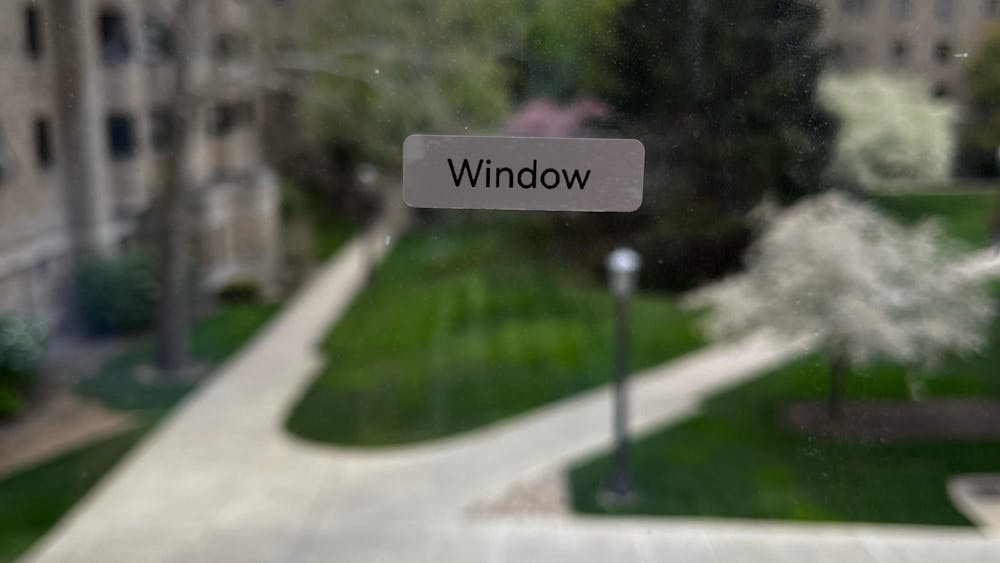“God gives his hardest battles to his strongest soldiers.”
This quote was one of many displayed last Saturday at Notre Dame’s annual Rare Disease Day. The two-day conference was hosted by Notre Dame’s Boler-Parseghian Center for Rare and Neglected Diseases and was meant to raise awareness and increase understanding of particular rare diseases.
It’s an important mission. Rare diseases are defined in the U.S. as conditions that affect fewer than 200,000 people, but in total about 30 million Americans suffer from one of them — that’s 10 percent of the population. Fifty percent of sufferers are children, and of those 30 percent won’t live to see their fifth birthday.
Part of the problem is that these rare diseases are often genetic in nature, making them harder to treat — you can’t vaccinate against your own DNA. But the biggest issues holding rare disease treatments back are often financial in nature, not scientific.
It’s no surprise that not all diseases receive the same amount of research money. Psoriasis, a skin condition that causes scaly rashes, receives about one one-hundreth of the amount of NIH funding allocated to HIV/AIDS. That’s a statistic most people are okay with, as most people would consider HIV/AIDS to be a more “serious” disease. And it’s true that HIV/AIDS is life-threatening while psoriasis is not. But 125 million people worldwide are living with psoriasis, while 37 million are living with HIV/AIDS. Psoriasis is an autoimmune disease, and studying it could shed light the 100 or so other identified autoimmune diseases; HIV/AIDS is a retro-virus, one of only three such pathogens known to cause disease. There are dozens of independent foundations dedicated to raising awareness and funds for HIV/AIDS; there are less than 10 such foundations for the care of psoriasis.
Even with all that mind, it’s probably still appropriate that HIV/AIDS gets much more funding than psoriasis, if only because AIDS is deadly and psoriasis is uncomfortable. But this example highlights an important topic in healthcare policy: How do you decide which diseases get money, and which ones get swept under the carpet?
The issue is complicated: Policy makers have to take into account the number of people affected, the severity of the symptoms, the costs of treatments and potential of the research. They have to ask questions like, ‘What’s more serious — a disease that causes life-long disability, or one that causes premature death? Is it more important to fund disease research that’s close to a cure, or still stuck in the beginning stages? A disease that brings 1,000 people pain, or a disease that kills five?’
Federal funding agencies are required to answer these questions. They have a limited amount of money, and they have to find ways to distribute it equitably — or at least to try. Perhaps not surprisingly, rare diseases are more likely to get the shorter end of the financial stick.
Rare diseases receive less federal funding, and also less public attention — everyone knows about breast cancer, but how many have heard of neurofibromatosis? Less public attention translates to less public demand, and again, lower funding priorities. It also translates to fewer dedicated treatment centers, support foundations and public resources. Even if a successful treatment is developed, pharmaceutical companies are less willing to produce it — rare diseases have fewer patients, and it’s more cost-effective to produce drugs that are marketable to more people. For pharmaceuticals, fewer sick people means fewer paying customers. Currently, there are less than 4,000 FDA approved drugs for the 7,000 identified rare diseases.
The obstacles facing rare disease research are large, but the situation is far from hopeless. The NIH might have its hands tied as far as who gets what percentage of its money, but the federal government has a huge bank account — the one one-hundredth fraction that goes to psoriasis is still over $10 million per year. And the public can help. Charitable foundations can raise startling amounts of money to fund research and development — like the EveryLife Foundation, which recently raised $60,000 to support scientists training as genetic disease specialists. Donations from every day people make up the bulk of these foundations’ proceeds. Remember the ALS ice bucket challenge? Its advocacy resulted in over $115 million in donations to fund research into the rare disease Amyotrophic Lateral Sclerosis, and thanks to that money researchers have identified what may be the most important gene involved in the disease.
Advocacy helps. Events like the one last weekend raise awareness, which is the first step to raising funds — or the demand for them. Rare diseases may only affect 10 percent of Americans, but all of us can help by listening to their stories, understanding their problems and supporting the research that may save their lives.
God may give his hardest battles to his strongest soldiers. But fighting rare diseases doesn’t have to be one of them.













